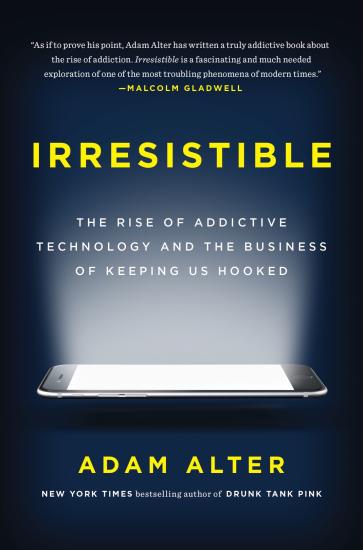
Rating: Not rated
Tags: Psychology, Psychopathology, Compulsive Behavior, Social Science, Popular Culture, Addiction, Technology & Engineering, Social Aspects, General, Self-Help, Personal Growth, Science, Philosophy & Social Aspects, Disease & Health Issues, Lang:en
Publisher: Penguin Publishing Group
Added: September 2, 2020
Modified: November 5, 2021
Summary
“One of the most
mesmerizing and important books I’ve read in quite some
time. Alter brilliantly illuminates the new obsessions that
are controlling our lives and offers the tools we need to
rescue our businesses, our families, and our
sanity.”
—
Adam Grant,
New
York Times
bestselling author
of
Originals
and *Give and
Take
*
Welcome to the age of
behavioral addiction—an age in which half of the
American population is addicted to at least one behavior.
We obsess over our emails, Instagram likes, and Facebook
feeds; we binge on TV episodes and YouTube videos; we work
longer hours each year; and we spend an average of three
hours each day using our smartphones. Half of us would
rather suffer a broken bone than a broken phone, and
Millennial kids spend so much time in front of screens that
they struggle to interact with real, live humans.
Adam Alter's previous
book,
Drunk
Tank Pink: And Other Unexpected Forces that Shape How We
Think, Feel, and Behave
is available in
paperback from Penguin.
**
In this revolutionary book, Adam Alter, a professor
of psychology and marketing at NYU, tracks the rise of
behavioral addiction, and explains why so many of today's
products are irresistible. Though these miraculous products
melt the miles that separate people across the globe, their
extraordinary and sometimes damaging magnetism is no
accident. The companies that design these products tweak
them over time until they become almost impossible to
resist.
By reverse engineering behavioral addiction, Alter
explains how we can harness addictive products for the
good—to improve how we communicate with each other,
spend and save our money, and set boundaries between work
and play—and how we can mitigate their most damaging
effects on our well-being, and the health and happiness of
our children.